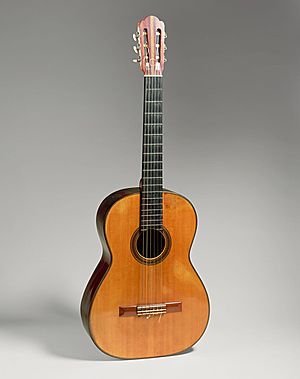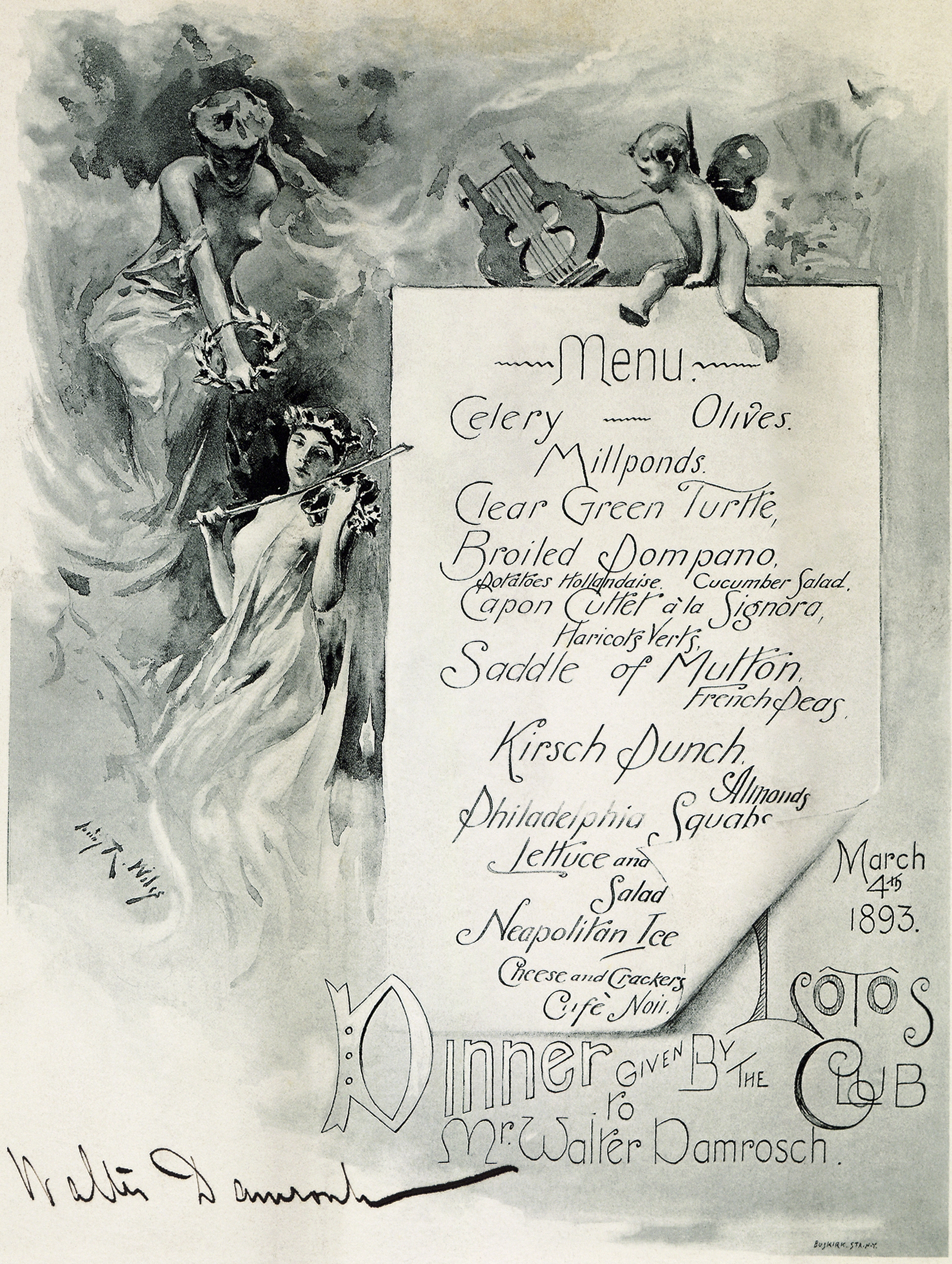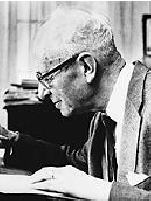|
Paganini Quartet
The Paganini Quartet was an American string quartet founded by cellist Robert Maas and violinist Henri Temianka in 1946. The quartet drew its name from the fact that all four of its instruments, made by Antonio Stradivari (1644–1737), had once been owned by the great Italian violinist and composer Niccolo Paganini (1782–1840). Origins In 1945, Maas, who had been with the Pro Arte Quartet until early in World War II and was interested in forming a new string quartet, secured a sponsorship from Anna Clark, the widow of copper millionaire William A. Clark. Maas happened upon four Paganini Strads at the shop of Emil Herrmann in New York, and mentioned them to Mrs. Clark, who promptly purchased the instruments for the quartet's use. Meanwhile, another patron of chamber music, Elizabeth Sprague Coolidge, had sponsored violinist Henri Temianka's performance of the Beethoven violin sonata cycle at the Library of Congress in Washington, D.C., with pianist Leonard Shure, and she a ... [...More Info...] [...Related Items...] OR: [Wikipedia] [Google] [Baidu] |
Classical Music
Classical music generally refers to the art music of the Western world, considered to be distinct from Western folk music or popular music traditions. It is sometimes distinguished as Western classical music, as the term "classical music" also applies to non-Western art music. Classical music is often characterized by formality and complexity in its musical form and harmonic organization, particularly with the use of polyphony. Since at least the ninth century it has been primarily a written tradition, spawning a sophisticated notational system, as well as accompanying literature in analytical, critical, historiographical, musicological and philosophical practices. A foundational component of Western Culture, classical music is frequently seen from the perspective of individual or groups of composers, whose compositions, personalities and beliefs have fundamentally shaped its history. Rooted in the patronage of churches and royal courts in Western Europe, surviving earl ... [...More Info...] [...Related Items...] OR: [Wikipedia] [Google] [Baidu] |
Andrés Segovia
Andrés Segovia Torres, 1st Marquis of Salobreña (21 February 1893 – 2 June 1987) was a Spanish virtuoso classical guitarist. Many professional classical guitarists were students of Segovia or their students. Segovia's contribution to the modern-romantic repertoire included not only commissions but also his own transcriptions of classical or baroque works. He is remembered for his expressive performances: his wide palette of tone, and his distinctive musical personality, phrasing and style. Early life Segovia was born on 21 February 1893 in Linares, Jaén. He was sent at a very young age to live with his uncle Eduardo and aunt María. Eduardo arranged for Segovia's first music lessons with a violin teacher after he had recognised that Segovia had an aptitude for music. That proved to be an unhappy introduction to music for the young Segovia because of the teacher's strict methods, and Eduardo stopped the lessons. His uncle decided to move to Granada to allow Segovia to ob ... [...More Info...] [...Related Items...] OR: [Wikipedia] [Google] [Baidu] |
Stradivarius
A Stradivarius is one of the violins, violas, cellos and other string instruments built by members of the Italian family Stradivari, particularly Antonio Stradivari (Latin: Antonius Stradivarius), during the 17th and 18th centuries. They are considered some of the finest instruments ever made, and are extremely valuable collector's items. According to their reputation, the quality of their sound has defied attempts to explain or equal it, though this belief is disputed. The many blind experiments from 1817 to as recently as 2014 have found no difference in sound between Stradivari's violins and high-quality violins in comparable style of other makers and periods, nor has acoustic analysis. The fame of Stradivarius instruments is widespread, appearing in numerous works of fiction. Construction Stradivari made his instruments using an inner form, unlike the French copyists, such as Jean-Baptiste Vuillaume, Vuillaume, who employed an outer form. It is clear from the number of f ... [...More Info...] [...Related Items...] OR: [Wikipedia] [Google] [Baidu] |
Walter Damrosch
Walter Johannes Damrosch (January 30, 1862December 22, 1950) was a German-born American conductor and composer. He was the director of the New York Symphony Orchestra and conducted the world premiere performances of various works, including George Gershwin's Piano Concerto in F, ''An American in Paris'', and Jean Sibelius' ''Tapiola''. Damrosch was also instrumental in the founding of Carnegie Hall. He also conducted the first performance of Rachmaninoff's Piano Concerto No. 3 with the composer himself as soloist. Life and career Damrosch was born in Breslau, Silesia, a son of Helene von Heimburg, a former opera singer, and the conductor Leopold Damrosch, and brother of conductor Frank Damrosch and music teacher Clara Mannes. His parents were Lutheran (his paternal grandfather was Jewish). He exhibited an interest in music at an early age and was instructed by his father in harmony and also studied under Wilhelm Albert Rischbieter and Felix Draeseke at the Dresden Conserva ... [...More Info...] [...Related Items...] OR: [Wikipedia] [Google] [Baidu] |
Royal Conservatory Of Brussels
The Royal Conservatory of Brussels (french: Conservatoire royal de Bruxelles, nl, Koninklijk Conservatorium Brussel) is a historic conservatory in Brussels, Belgium. Starting its activities in 1813, it received its official name in 1832. Providing performing music and drama courses, the institution became renowned partly because of the international reputation of its successive directors such as François-Joseph Fétis, François-Auguste Gevaert, Edgar Tinel, Joseph Jongen or Marcel Poot, but more because it has been attended by many of the top musicians, actors and artists in Belgium such as Arthur Grumiaux, José van Dam, José Van Dam, Sigiswald Kuijken, Josse De Pauw, Luk van Mello and Luk De Konink. Adolphe Sax, inventor of the saxophone, also studied at the Brussels Conservatory. In 1967, the institution split into two separate entities: the , which teaches in Dutch language, Dutch, and the , which continued teaching in French language, French. While the French-speaking en ... [...More Info...] [...Related Items...] OR: [Wikipedia] [Google] [Baidu] |
Benjamin Lees
Benjamin Lees (January 8, 1924 – May 31, 2010) was an American composer of classical music. Early life Lees was born Benjamin George Lisniansky in Harbin, Manchuria, of Russian-Jewish descent. Lees was still an infant when his family emigrated to the United States and settled in California. He began piano lessons at 5 with Kiva Ihil Rodetsky of San Francisco. When he was seven years old, he became an American citizen. In 1939, he moved with his family to Los Angeles and continued studies in piano with Marguerite Bitter. In his early teens, he studied harmony and theory and began to compose. After serving in the United States military, Lees studied composition under Halsey Stevens, as well as with Kalitz and Ingolf Dahl, at the University of Southern California in Los Angeles, California. Composer George Antheil, impressed by Lees' compositions, offered further tutelage; this period lasted four years, at the end of which Lees won a Fromm Foundation Award. Of Antheil, Lees dec ... [...More Info...] [...Related Items...] OR: [Wikipedia] [Google] [Baidu] |
Alberto Ginastera
Alberto Evaristo Ginastera (; April 11, 1916June 25, 1983) was an Argentinian composer of classical music. He is considered to be one of the most important 20th-century classical composers of the Americas. Biography Ginastera was born in Buenos Aires to a Spanish father and an Italian mother. During his later years, he preferred to use the Catalan and Italian pronunciation of his surname – , with an initial soft 'G' like that of English 'George' – rather than with a Spanish 'J' sound (). Ginastera studied at the Williams Conservatory in Buenos Aires, graduating in 1938. As a young professor, he taught at the Liceo Militar General San Martín. After a visit to the United States in 1945–47, where he studied with Aaron Copland at Tanglewood, he returned to Buenos Aires. He held a number of teaching posts. Among his notable students were Ástor Piazzolla (who studied with him in 1941), Alcides Lanza, Jorge Antunes, Waldo de los Ríos, Jacqueline Nova and Rafael Aponte-Ledé ... [...More Info...] [...Related Items...] OR: [Wikipedia] [Google] [Baidu] |
Mario Castelnuovo-Tedesco
Mario Castelnuovo-Tedesco (3 April 1895 – 16 March 1968) was an Italian composer, pianist and writer. He was known as one of the foremost guitar composers in the twentieth century with almost one hundred compositions for that instrument. In 1939 he immigrated to the United States and became a film composer for Metro-Goldwyn-Mayer for some 200 Hollywood movies for the next fifteen years. He also wrote concertos for Jascha Heifetz and Gregor Piatigorsky. Biography Born in Florence, he was descended from a prominent banking family that had lived in Tuscany, specifically in Siena until the latter half of the 19th century, since the expulsion of Jews from Spain in 1492. His father was Amedeo and his elder brothers Ugo (born in 1890, lawyer) and Guido (born in 1891, engineer). Castelnuovo-Tedesco was first introduced to the piano by his mother, Noemi Senigaglia, and he composed his first pieces when he was just nine years old. After completing a degree in piano in 1914 under Edga ... [...More Info...] [...Related Items...] OR: [Wikipedia] [Google] [Baidu] |
Darius Milhaud
Darius Milhaud (; 4 September 1892 – 22 June 1974) was a French composer, conductor, and teacher. He was a member of Les Six—also known as ''The Group of Six''—and one of the most prolific composers of the 20th century. His compositions are influenced by jazz and Brazilian music and make extensive use of polytonality. Milhaud is considered one of the key modernist composers.Reinhold Brinkmann & Christoph Wolff, ''Driven into Paradise: The Musical Migr ... [...More Info...] [...Related Items...] OR: [Wikipedia] [Google] [Baidu] |
Ravel
Joseph Maurice Ravel (7 March 1875 – 28 December 1937) was a French composer, pianist and conductor. He is often associated with Impressionism in music, Impressionism along with his elder contemporary Claude Debussy, although both composers rejected the term. In the 1920s and 1930s Ravel was internationally regarded as France's greatest living composer. Born to a music-loving family, Ravel attended France's premier music college, the Paris Conservatoire; he was not well regarded by its conservative establishment, whose biased treatment of him caused a scandal. After leaving the conservatoire, Ravel found his own way as a composer, developing a style of great clarity and incorporating elements of modernism (music), modernism, baroque music, baroque, Neoclassicism (music), neoclassicism and, in his later works, jazz. He liked to experiment with musical form, as in his best-known work, ''Boléro'' (1928), in which repetition takes the place of development. Renowned for his abi ... [...More Info...] [...Related Items...] OR: [Wikipedia] [Google] [Baidu] |
Debussy
(Achille) Claude Debussy (; 22 August 1862 – 25 March 1918) was a French composer. He is sometimes seen as the first Impressionist composer, although he vigorously rejected the term. He was among the most influential composers of the late 19th and early 20th centuries. Born to a family of modest means and little cultural involvement, Debussy showed enough musical talent to be admitted at the age of ten to France's leading music college, the Conservatoire de Paris. He originally studied the piano, but found his vocation in innovative composition, despite the disapproval of the Conservatoire's conservative professors. He took many years to develop his mature style, and was nearly 40 when he achieved international fame in 1902 with the only opera he completed, '' Pelléas et Mélisande''. Debussy's orchestral works include ''Prélude à l'après-midi d'un faune'' (1894), ''Nocturnes'' (1897–1899) and ''Images'' (1905–1912). His music was to a considerable extent a r ... [...More Info...] [...Related Items...] OR: [Wikipedia] [Google] [Baidu] |
Verdi
Giuseppe Fortunino Francesco Verdi (; 9 or 10 October 1813 – 27 January 1901) was an Italian composer best known for his operas. He was born near Busseto to a provincial family of moderate means, receiving a musical education with the help of a local patron. Verdi came to dominate the Italian opera scene after the era of Gioachino Rossini, Gaetano Donizetti, and Vincenzo Bellini, whose works significantly influenced him. In his early operas, Verdi demonstrated a sympathy with the Risorgimento movement which sought the unification of Italy. He also participated briefly as an elected politician. The chorus "Va, pensiero" from his early opera ''Nabucco'' (1842), and similar choruses in later operas, were much in the spirit of the unification movement, and the composer himself became esteemed as a representative of these ideals. An intensely private person, Verdi did not seek to ingratiate himself with popular movements. As he became professionally successful, he was able ... [...More Info...] [...Related Items...] OR: [Wikipedia] [Google] [Baidu] |








